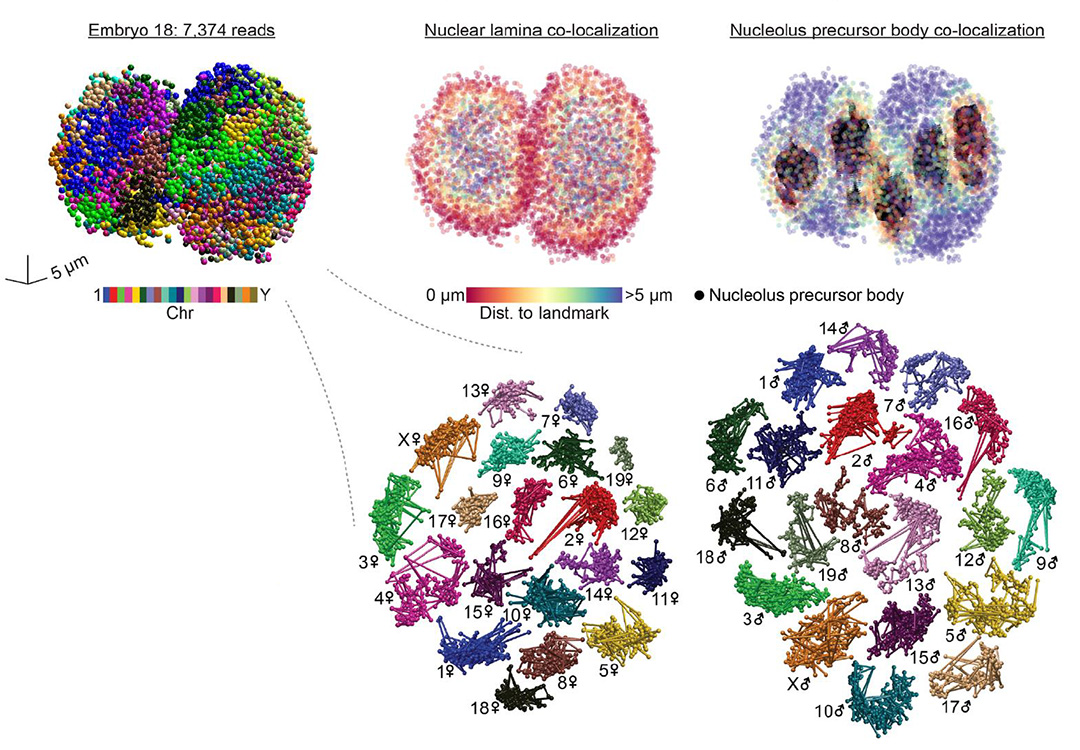In situ genome sequencing resolves DNA sequence and structure in intact biological samples
[Publisher Link] [Local Copy]
Payne AC*, Chiang ZD*, Reginato PL*, Mangiameli SM, Murray EM, Yao CC, Markoulaki S, Earl AS, Labade AS, Jaenisch R, Church GM, Boyden ES**, Buenrostro JD**, Chen F** (2020) In situ genome sequencing resolves DNA sequence and structure in intact biological samples, Science 371(6532):eaay3446. (* equal contribution, **co-corresponding)

Understanding genome organization requires integration of DNA sequence and 3D spatial context, however, existing genome-wide methods lack either base-pair sequence resolution or direct spatial localization. Here, we describe in situ genome sequencing (IGS), a method for simultaneously sequencing and imaging genomes within intact biological samples. We applied IGS to human fibroblasts and early mouse embryos, spatially localizing thousands of genomic loci in individual nuclei. Using these data, we characterized parent-specific changes in genome structure across embryonic stages, revealed single-cell chromatin domains in zygotes, and uncovered epigenetic memory of global chromosome positioning within individual embryos. These results demonstrate how in situ genome sequencing can directly connect sequence and structure across length scales from single base pairs to whole organisms.